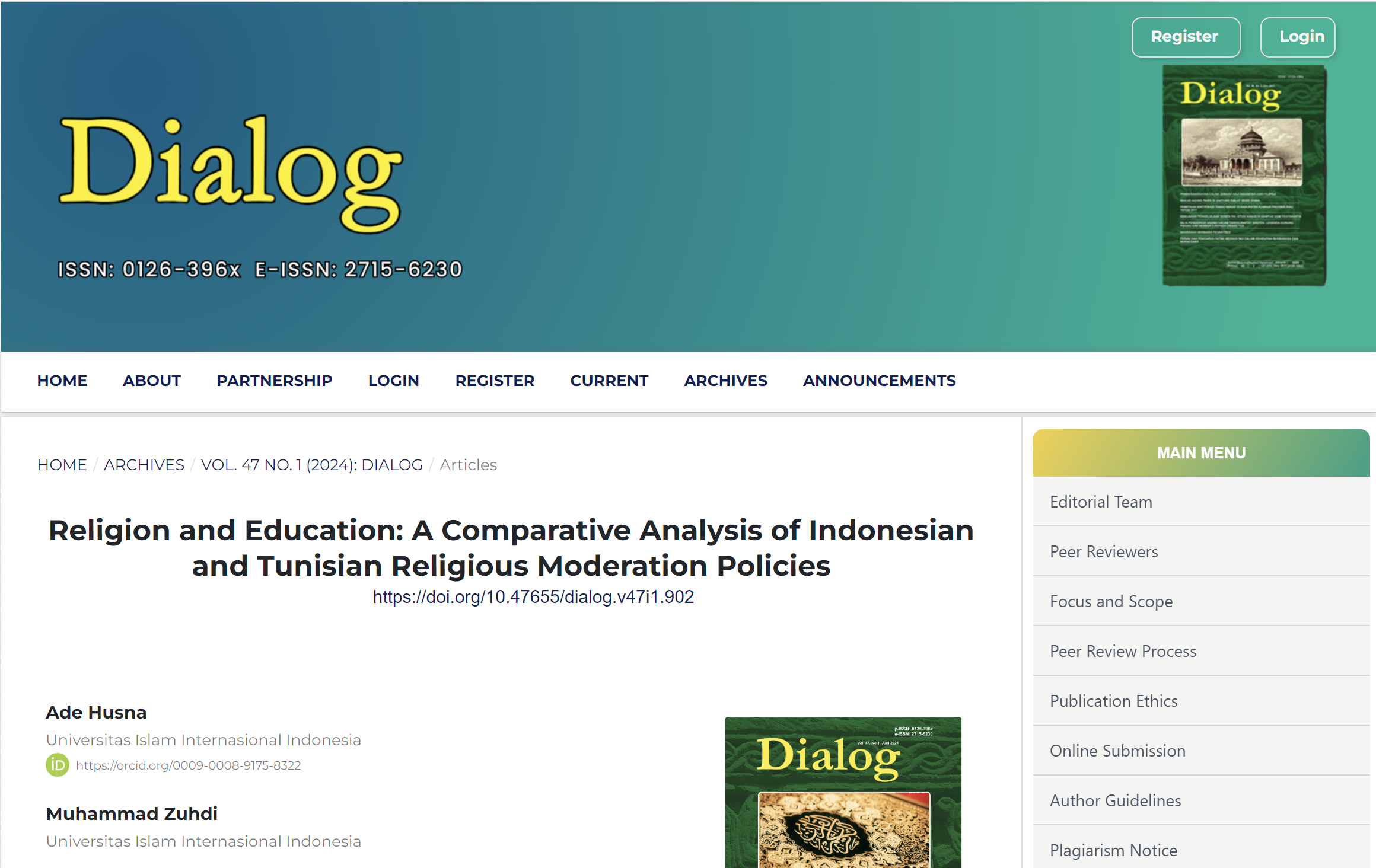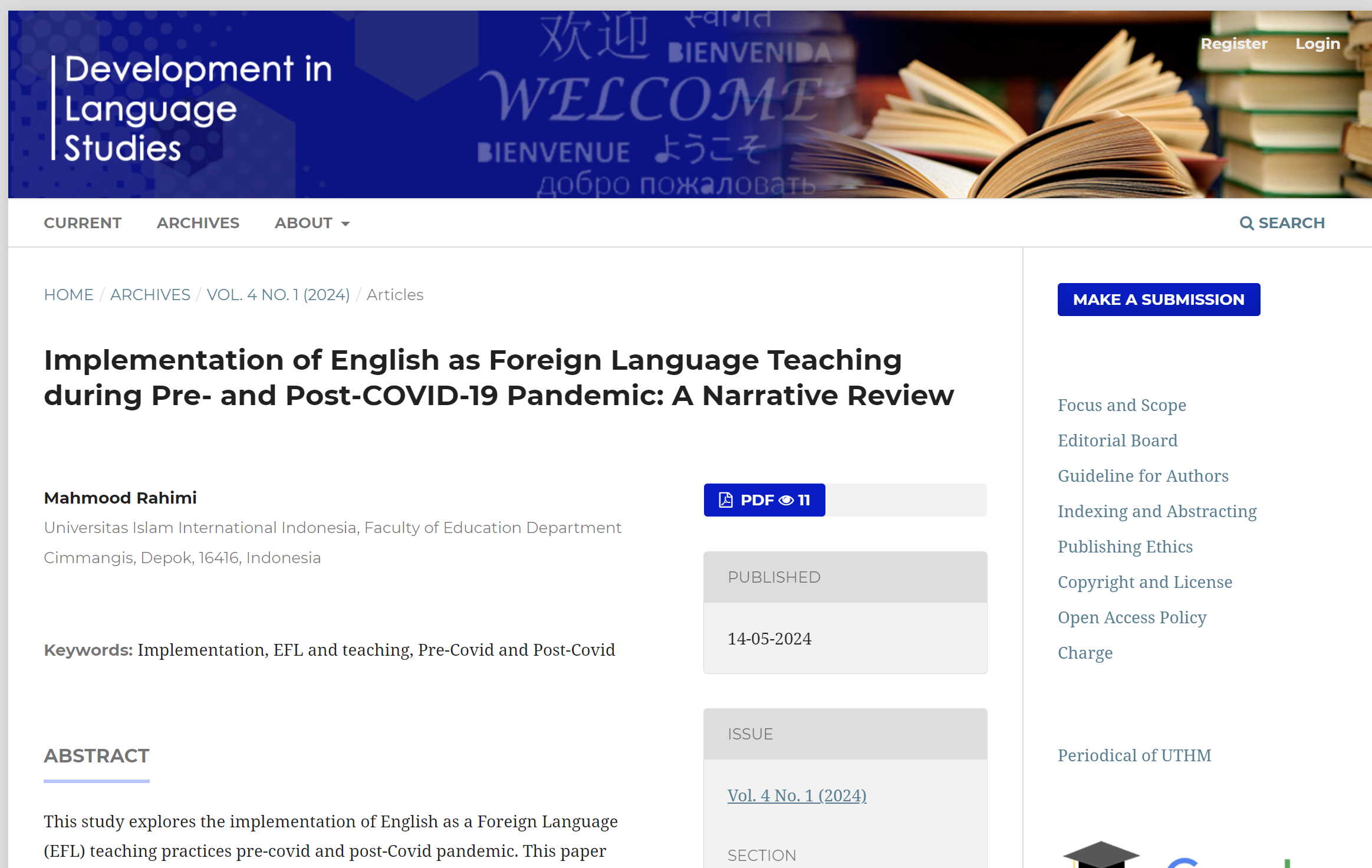Balancing School and Part-Time Work: An Exploratory Study of AfghanElementary School Students
 Samadi, H., Rahimi, M., & Ghafoori, L. (2025). Balancing School and Part-Time Work: An Exploratory Study of Afghan Elementary School Students: Balancing School and Part-Time Work: An Exploratory Study of Afghan Elementary School Students. International Journal of Education & Well-Being , 3(1). https://doi.org/10.62416/ijwb-53
Samadi, H., Rahimi, M., & Ghafoori, L. (2025). Balancing School and Part-Time Work: An Exploratory Study of Afghan Elementary School Students: Balancing School and Part-Time Work: An Exploratory Study of Afghan Elementary School Students. International Journal of Education & Well-Being , 3(1). https://doi.org/10.62416/ijwb-53
Abstract
Prolonged conflict and socio-economic hardships have overwhelmingly impacted families in Afghanistan, coercing them to depend on their underage children as financial contributors. The current research explores the intricacies between elementary school students balancing education and employment in the Afghancontext (aged 8-13) juggling both school and part-time jobs. Adopting a phenomenological approach, the study investigates the day-to-day experiences of these students employing a semi-structured interview and purposive sampling in accordance with Clarke and Braun's reflexive thematic analysis. The analysis identified three principal themes: challenges, experiences, and coping mechanisms. Students confronting challenges, irregular school attendance due to working demands, family financial issues, and psychological stresses. Their experiences indicate important physical and psychological toll which incorporates fatigue, and most importantly academic impediments such as missed assignments, and daily struggles. Task prioritization and time management are generally confined to the coping mechanism to overcome them. These findings provide a solid evidence base for tailored interventions and international aid to address and alleviate these students’ burden. This research can contribute to a better understanding ofthe dual burden of labor and education confronted by Afghan children to spotlight the urgency for a thorough policy response.
Educational Policy Analysis: Examining Pesantren Policies and Their Implications on the Independence of Kyai and Pesantren in the Contemporary Era
 Nadhif Muhammad Mumtaz, Evi Muafiah, & Doli Witro. (2024). Educational Policy Analysis: Examining Pesantren Policies and Their Implications on the Independence of Kyai and Pesantren in the Contemporary Era. Jurnal Pendidikan Agama Islam, 21(2), 287–306. https://doi.org/10.14421/jpai.v21i2.9612
Nadhif Muhammad Mumtaz, Evi Muafiah, & Doli Witro. (2024). Educational Policy Analysis: Examining Pesantren Policies and Their Implications on the Independence of Kyai and Pesantren in the Contemporary Era. Jurnal Pendidikan Agama Islam, 21(2), 287–306. https://doi.org/10.14421/jpai.v21i2.9612
Abstract
Purpose – This study aims to investigate the autonomy of “Kyai” (religious teachers) within Pesantren in making education policy. In examining these policies, it focuses on the evolution of teaching and the implementation of the “Asas Tunggal Pancasila” in Indonesian educational institutions, the struggles of Pesantren policies that led to the birth of Law No. 18 of 2019, and the dark side of the politicization of religion that has implications for educational policies.
Design/methods/approach – This type of research uses qualitative research with a case study of two Islamic boarding schools in East Java (research objects). Primary data sources come from observation and interview results. Secondary data sources come from library sources such as laws, scientific articles (journals), books, etc. Data collection used observation techniques, semi-structured in-depth interviews, and documentation (document analysis). Data analysis techniques used qualitative data analysis techniques, namely data condensation, data presentation, and conclusion drawing.
Findings – The research reveals that the law empowers Pesantren and Kyai to shape their institutions in alignment with societal demands, traditions, and evolving times. Though the Kyai’s independence significantly affects the Pesantren’s trajectory, it does not singularly define its identity. The law underscores the imperative for contemporary teaching methods, curriculum evolution, and infrastructure enhancement, urging Kyai to eschew rigid and authoritarian stances.
Research implications/limitations – The research has theoretical implications that two contrasting views concerning Pesantren policies’ influence on Kyai’s independence vis-à-vis political elites. Proponents (“Yes”) highlight Alignment of Interest, Empowerment and Development, and Community Engagement. Opponents (“No”) cite the Preservation of Autonomy, the potential for manipulation, and an inherent distrust of political parties.
Originality/value – The research provides direction for the complex interplay between religious education and the political domain in Indonesia.
The Challenges and Opportunities of the Merdeka Belajar Policy in Higher Education: The Prospects for Its Implementation
 Windiana, W., Nihaya, K., and Nugraha, M.I. (2024). The Challenges and Opportunities of the Merdeka Belajar Policy in Higher Education: The Prospects for Its Implementation. Khazanah Pendidikan, 6(2). https://journal.uinsgd.ac.id/index.php/kp/article/view/38548
Windiana, W., Nihaya, K., and Nugraha, M.I. (2024). The Challenges and Opportunities of the Merdeka Belajar Policy in Higher Education: The Prospects for Its Implementation. Khazanah Pendidikan, 6(2). https://journal.uinsgd.ac.id/index.php/kp/article/view/38548
Abstract
Exploring Interactive Read Aloud Literacy Learning and Quality Books in the Merdeka Curriculum
Durriyah, T. L., Niasari, C., & Afriyanti , I. (2024). Exploring Interactive Read Aloud Literacy Learning and Quality Books in the Merdeka Curriculum. Pedagogia: Jurnal Pendidikan, 13(2), 306-319. https://doi.org/10.21070/pedagogia.v13i2.1718
Abstract
The Indonesian government issued a policy on teacher literacy teaching competency standards, which includes teachers' ability to help students access, use, interpret, and communicate information and ideas through various texts according to students' characteristics and needs (Ministry of Education, 2022a). This study aims to promote reading aloud and interactive book selection in literacy learning for public primary school teachers in Depok, West Java, Indonesia. This qualitative case study explored teachers' understandings and practices in selecting books and integrating reading-aloud activities with learning outcomes in the Merdeka Curriculum. Six teachers participated in the study, which involved data collection through surveys, focus group discussions (FGDs), interviews, observations, and oral reflections. Using manual thematic data analysis, this study focused on teachers' practices of selecting leveled books and integrating discussions in reading aloud with Learning Outcomes. The results showed that teachers began to express their understanding of book selection. Major themes that emerged included the importance of selecting quality books and the challenges of selecting quality books. In the context of literacy learning, several themes also emerged that became teachers' reflections in conducting interactive read-aloud activities in accordance with the learning outcomes, namely benefits, awareness for better classroom preparation, interactive discussion spaces, and continuous training.
God in Awe and Intimacy: Jewish and Muslim Perspectives on Understanding and Pronouncing the Name(s) of God and its Relation to the Humanitarian Crisis
Yuliyanti, N. (2024). God in Awe and Intimacy: Jewish and Muslim Perspectives on Understanding and Pronouncing the Name(s) of God and its Relation to the Humanitarian Crisis. Teosofia: Indonesian Journal of Islamic Mysticism, 13(1), 1-18. doi:https://doi.org/10.21580/tos.v13i1.20534
Abstract
Religion and Education: A Comparative Analysis of Indonesian and Tunisian Religious Moderation Policies
 Husna, A., & Zuhdi, M. (2024). Religion and Education: A Comparative Analysis of Indonesian and Tunisian Religious Moderation Policies. Dialog, 47(1), 1–12. https://doi.org/10.47655/dialog.v47i1.902
Husna, A., & Zuhdi, M. (2024). Religion and Education: A Comparative Analysis of Indonesian and Tunisian Religious Moderation Policies. Dialog, 47(1), 1–12. https://doi.org/10.47655/dialog.v47i1.902
Abstract
Promoting Pluralism Through Critical Thinking in Islamic Religious Education
 Rahmah, Fadlilah Novia. "Promoting Pluralism Through Critical Thinking in Islamic Religious Education." Proceeding International Conference on Islam and Education (ICONIE), 3(1), 1650-1678. https://proceeding.uingusdur.ac.id/index.php/iconie/article/view/1695
Rahmah, Fadlilah Novia. "Promoting Pluralism Through Critical Thinking in Islamic Religious Education." Proceeding International Conference on Islam and Education (ICONIE), 3(1), 1650-1678. https://proceeding.uingusdur.ac.id/index.php/iconie/article/view/1695
Abstract
Unity in Diversity: Examining Religious Moderation across Religions in Indonesia
Unity in Diversity: Examining Religious Moderation across Religions in Indonesia
- Muhamad Maulana, Universitas Islam International Indonesia https://orcid.org/0009-0004-0542-3923
- Nabila Nindya Alifia Putri, Universitas Islam Internasional Indonesia
- Zihan Fahira, Universitas Gadjah Mada
Keywords:
religious, moderation, unity in diversity, Indonesia
Abstract
Indonesia's rich religious diversity, epitomized by the concept of "Unity in Diversity," presents both opportunities and challenges. This study delved into religious moderation across Indonesia's six recognized religions, Islam, Christianity (Catholic and Protestant), Hinduism, Buddhism, and, Confucianism, defining it as a commitment to tolerance, inclusivity, and critical thought within religious contexts. In addition to these six religions, Indonesia is unique in recognizing the existence of diverse indigenous beliefs according to different tribes and cultures. Through a literature review, the study revealed that religious moderation varies across different faith communities, yet remains crucial for fostering peace and harmonious coexistence. Interfaith initiatives, religious institutions, and education were identified as key factors in promoting religious moderation. The study concludes that embracing the diverse expressions of religious moderation is essential for building a more inclusive and harmonious Indonesia, where “Bhinneka Tunggal Ika” transcends rhetoric to become a vibrant reality.
Maulana, M., Alifia Putri, N. N., & Fahira, Z. (2024). Unity in Diversity: Examining Religious Moderation across Religions in Indonesia. Dialog, 47(1), 61–76. https://jurnaldialog.kemenag.go.id/index.php/dialog/article/view/910
Implementation of English as Foreign Language Teaching during Pre- and Post-COVID-19 Pandemic: A Narrative Review
 Mahmood Rahimi. (2024). Implementation of English as Foreign Language Teaching during Pre- and Post-COVID-19 Pandemic: A Narrative Review. Development in Language Studies, 4(1), 19-31. https://publisher.uthm.edu.my/periodicals/index.php/dils/article/view/16138
Mahmood Rahimi. (2024). Implementation of English as Foreign Language Teaching during Pre- and Post-COVID-19 Pandemic: A Narrative Review. Development in Language Studies, 4(1), 19-31. https://publisher.uthm.edu.my/periodicals/index.php/dils/article/view/16138



